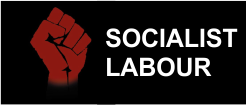The eighth part of our series of articles on some of the basic politics of Socialist Labour for discussion by its members.
In 1917, the Bolshevik Party, led by VI Lenin and L Trotsky, enabled the working class in Russia to take power and achieve socialism. This event was greeted across the world with enormous popular enthusiasm. In the midst of the bloody slaughter of the First World War the workers’ and soldiers’ councils (soviets) took control of the whole country. The new government took Russia out of the war. Factory committees or soviets took over all work places. The peasants were given their land. Legislation gave women the most advanced freedoms anywhere in the world.
The new government called on workers and colonised peoples across the world to join them in building socialism. No socialist could fail to support this brilliant appeal.
From the beginning, however, the infant socialist regime faced immense problems. The reactionary White armies launched a brutal civil war, backed by every major European government. Russia lost more soldiers in the First World War than any other country. Now, in the civil war, the death toll was even higher.
The very working class that had led the move to socialism in 1917 was decimated, as Russia’s cities were depopulated. Many of the best and most committed working class activists died defending socialism, leaving others to run the soviets.
In the very process of winning the civil war, the regime was corrupted. Orders replaced popular democracy in more and more workplaces. Surveying the scene in 1920, Lenin, who was brutally honest, said, ‘Ours is a workers’ and peasants’ state suffering from serious bureaucratic degeneration.’
If socialism did not spread, Lenin and his comrades repeated again and again, they would be defeated. But socialism remained isolated in Russia. The ‘bureaucratic degeneration’ Lenin had described deepened. In the mid-1920s Stalin, then the ruling party leader, abandoned previous attempts to spread socialism across the world. Now, he declared, ‘socialism in one country’ was possible and desirable.
Until the late 1920s Lenin’s description fitted Russia more and more precisely. But at the end of the 1920s Stalin set an entirely new course. It was necessary, he declared, for Russia to ‘catch up and overtake’ the major capitalist countries.
The new policy was enshrined in Five Year Plans. This programme of rapid industrialisation involved a ferocious assault on the people’s conditions. Real wages had risen during the 1920s, now they were slashed. The peasants’ land was now taken from them and collectivised. Equality was officially declared an anti-socialist policy.
In the name of ‘socialist construction’, Stalin led a counter-revolution from above. Every remnant of the popular democracy of 1917 was systematically expunged. Forced labour camps were set up, with millions of slave workers. In the purges of the 1930s Stalin’s political police arrested and murdered every leading Bolshevik who had lead the move to socialism 1917.
Tragically, many communists around the world believed Stalin’s lies, defending the disastrous conditions in Russia as socialism.
On the left, those who opposed Stalin struggled to make sense of what was happening. Stalin’s most prominent opponent, Leon Trotsky who had led the Red Army during the civil war, still held on to Lenin’s 1920 formula, calling Russia a ‘degenerated workers’ state’. For Trotsky, the existence of state-owned property meant Russia retained something socialist, even if in a highly perverted form. Trotsky denied a new ruling class had emerged in Russia.
The problems were compounded after the Second World War. Now Stalin expanded his control across Eastern Europe, putting his own stooges in charge of brutal copies of his own regime. Were these socialist states? If so, that would mean socialism was no longer the self emancipation of the working class.
In the late 1940s Tony Cliff finally offered a clearer Marxist theory of Russia and of its East European satellites. Stalin’s Russia, he insisted, was in no sense a workers’ state. The fact of state property in no way made it socialist – any more than nationalised industries do in Nigeria. Organisations like NEPA (before privatisation), or NNPC now, are not socialist.
In subordinating Russian society to the imperative of ‘catch up and overtake’, Stalin had followed a specifically capitalist path. Stalin’s Russia was clearly a class society, where intense exploitation of the working class provided the means for the rapid economic growth in the 1930s.
But capitalism involves not just class exploitation, but also competition. It was impossible to make sense of Russia ‘on its own’. It was part of a competitive world economy. The main mechanism of competition in Russia came in the shape of military competition with the West.
As part of world capitalism, Russia and its satellites also experienced economic crises. These lay behind the huge revolts that occurred in East Germany, Poland, Hungary and Czechoslovakia from the 1950s. Finally the whole edifice of Stalinism was brought down in 1989-91, often with the support of huge popular protests. It was not that socialism was unpopular, it had been removed many decades earlier.
From the whole tragic experience two things stand out. First, socialism must be international, or it will be destroyed from within and without. Second, socialism and the most widespread democracy are indissolubly linked.


